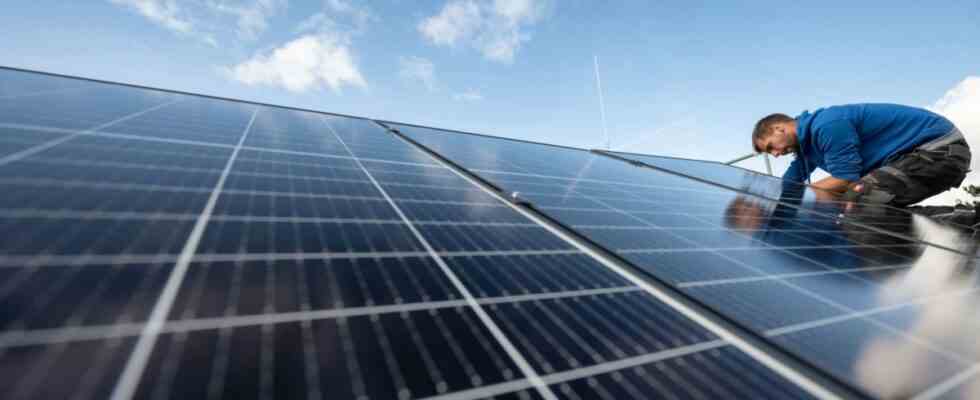As gratifying as the 15 percent share of geothermal energy (as of 2018) in Pullach’s total energy consumption is, the municipality must do more on its way to climate neutrality. Six more geothermal wells and a wind farm in Forstenrieder Park, which is about to start, will probably brighten up the balance a little, but that is by far not enough to avoid being listed in the top group of “dirty slingshots” in the next greenhouse gas report by the district of Munich.
In addition to the energy source at a depth of around 3,000 meters, the community now wants to tap into that at an altitude of around 150 million kilometers. In its meeting next Tuesday, July 5th, the municipal council is expected to decide on the construction and operation of 19 photovoltaic systems on public roofs. Last week, the members of the Environment and Mobility Committee unanimously voted in favor of implementing this project.
If the municipal council follows their positive resolution recommendation, then 720,000 kilowatt hours of solar power will be generated annually on the roofs of the municipal properties, sufficient to cover the energy needs of around 300 three-person households. The roofs of the town hall, community center, fire brigade, primary school, sports center, building yard, “Drachen Hügel” kindergarten, the southern noise protection wall on the B 11 and eleven objects of the housing cooperative on Hans-Keis-Straße are to be equipped with a solar system.
Companies like Linde and United Initiators are to blame for the municipality’s poor climate balance
But they also want to target the roofs of the churches. A suitable operator model is now to be developed and the financing examined. The more area that comes together, the greater the interest of large providers, said Helmut Mangold, Managing Director of the Pullach geothermal company IEP, which the community is considering as the operator. If it fits economically and the concept is coherent, then he could present it to the IEP board of directors. “We are ready to do this if the funds are made available to the IEP,” said Mangold.
According to the administration, the solar-generated electricity could, for example, be fed into the Pullach power grid and sold as part of the regional IEP green electricity product. For properties with significant power consumption, such as the town hall, community center and building yard, the administration would recommend a self-use model that is customary for this case, since the self-consumption of the generated electricity has to be carried out by the system operator.
According to the district’s greenhouse gas report for 2018, the municipality of Pullach is one of the largest emitters of the 29 district municipalities with 14.4 tons of climate-damaging emissions per capita. However, private households, municipal facilities and transport are less responsible for this with a total of 30 percent of emissions, but rather industry, trade and commerce, above all United Initiators, Linde and the Federal Intelligence Service, which are responsible for 70 percent of CO2 emissions. “We have to involve the industry more,” said Florian Gehring (Greens).

